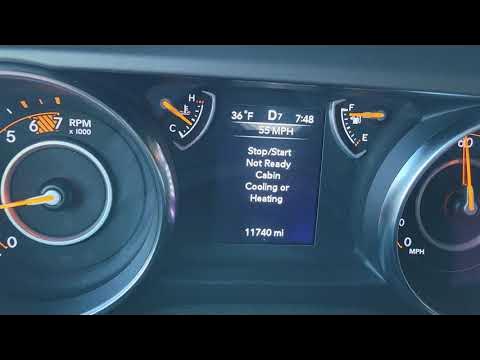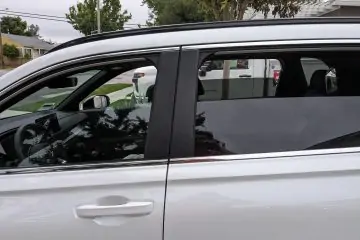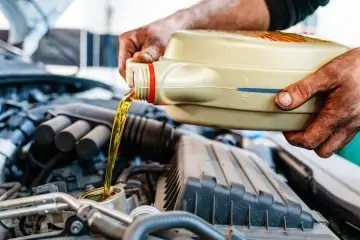The “Start-Stop Not Ready Cabin Cooling Or Heating” message usually indicates that the vehicle’s start-stop system is disabled due to ongoing cabin climate control. This can happen when the air conditioning or heating system is actively working to achieve a set cabin temperature.
Many modern vehicles feature start-stop systems designed to improve fuel efficiency by shutting off the engine when the vehicle is stationary. However, for this system to function optimally, certain conditions must be met. One of these conditions is the status of the cabin cooling or heating system.
If the climate control system is actively working to reach the desired temperature, the start-stop system may be temporarily disabled. This ensures passenger comfort is not compromised, as maintaining the set cabin temperature often requires the engine to remain running.
Start-stop System Basics
Understanding the Start-Stop System is crucial, especially when dealing with issues like “Stop Start Not Ready Cabin Cooling Or Heating.” This system is designed to enhance fuel efficiency and reduce emissions. Let’s explore the basics of the Start-Stop System.
Definition
The Start-Stop System is a feature in modern vehicles that automatically shuts down and restarts the engine. This occurs when the vehicle is stationary, such as at traffic lights. It helps to conserve fuel and reduce emissions. The system restarts the engine when the driver is ready to move again.
Purpose
The main purpose of the Start-Stop System is to save fuel and reduce emissions. It achieves this by turning off the engine when the vehicle is not moving. Here are the key benefits:
- Fuel Efficiency: Reduces fuel consumption during idle periods.
- Environmental Impact: Lowers CO2 emissions significantly.
- Engine Wear: Minimizes engine wear by reducing idle time.
When the cabin cooling or heating is in process, the Start-Stop System might not activate. This ensures passenger comfort is maintained.
Cabin Cooling And Heating
Cabin cooling and heating systems are vital for a comfortable driving experience. These systems ensure the interior climate is pleasant, regardless of external weather conditions. Whether it’s scorching summer heat or freezing winter cold, a well-functioning cabin climate control system is essential.
Functionality
Cabin cooling and heating systems work to regulate the interior temperature of your vehicle. Cooling systems use refrigerants to lower the cabin temperature. Heating systems, on the other hand, use the engine’s heat to warm the cabin. Both systems rely on a series of fans, vents, and sensors to maintain the desired temperature.
These systems are often integrated with the vehicle’s auto start-stop technology. This integration helps save fuel by turning off the engine during idle periods. However, if the cabin cooling or heating is not ready, the auto start-stop feature may not activate.
Importance
Maintaining a comfortable cabin temperature is crucial for driver and passenger comfort. Cooling systems prevent overheating and heat-related discomfort during hot weather. Heating systems ensure warmth during cold weather, preventing issues like frostbite or discomfort from cold air.
A well-functioning climate control system also contributes to overall vehicle performance. It ensures that the auto start-stop feature operates efficiently. This, in turn, helps in reducing fuel consumption and lowering emissions. Below is a table highlighting the importance of both systems:
| System | Importance |
|---|---|
| Cooling | Prevents overheating, ensures comfort |
| Heating | Prevents cold-related discomfort, ensures comfort |
Common Issues
The Stop Start Not Ready Cabin Cooling or Heating system can sometimes face problems. These issues often disrupt the comfort and efficiency of your vehicle. Understanding these common issues can help you troubleshoot and maintain your car’s performance.
Battery Problems
One of the most frequent issues is battery problems. The auto-start-stop system relies heavily on the battery. If the battery is weak, it may struggle to restart the engine. This can cause the auto-start-stop function to deactivate.
Here are some common battery-related issues:
- Weak or old battery
- Faulty battery connections
- Internally shorted auxiliary battery
Ensuring your battery is in good condition is crucial. Regular checks and maintenance can prevent these issues.
Sensor Malfunctions
Sensor malfunctions can also affect the stop-start system. The system uses various sensors to operate correctly. If these sensors fail, the system might not work as intended.
Some common sensor issues include:
- Faulty engine temperature sensor
- Malfunctioning cabin temperature sensor
- Problems with the vehicle’s speed sensor
Regular diagnostic checks can help identify sensor problems. Fixing these promptly can ensure your stop-start system functions smoothly.
| Issue | Description | Solution |
|---|---|---|
| Weak Battery | Battery can’t hold enough charge | Replace or recharge battery |
| Faulty Connections | Poor battery connections | Check and fix connections |
| Sensor Malfunctions | Failed or inaccurate sensors | Replace faulty sensors |
Diagnosing The Problem
Experiencing issues with your vehicle’s stop-start system? Specifically, the “Stop Start Not Ready Cabin Cooling Or Heating” warning can be frustrating. Diagnosing the problem is crucial for effective solutions. Below, we will walk you through the steps to check the system status and identify faults.
Checking System Status
Start by verifying the system status. Ensure the vehicle is parked safely and the engine is off. Use the car’s onboard diagnostics (OBD) system to get a readout of the current status. Most modern vehicles have a built-in display for this purpose.
Refer to the user manual for specific instructions on navigating the OBD menu. Look for any error codes or warnings related to the stop-start system. Take note of these codes, as they will be essential for troubleshooting.
Identifying Faults
Once you have the error codes, it’s time to identify the faults. Below is a table of common issues and their potential causes:
| Error Code | Potential Cause | Solution |
|---|---|---|
| P0A80 | Battery not holding charge | Replace the battery |
| P0A7F | Battery temperature too high/low | Check battery connections |
| P2610 | Engine control module (ECM) issue | Reprogram or replace ECM |
Next, inspect the battery connections. Ensure the terminals are clean and securely attached. Loose or corroded terminals can disrupt the stop-start system.
Finally, check the HVAC system. Ensure it is not set to full defrost mode. The system may prioritize cabin comfort, causing the stop-start feature to deactivate.
By carefully checking these components, you can diagnose the root cause of the “Stop Start Not Ready Cabin Cooling Or Heating” issue. Resolving these faults will restore the functionality of your vehicle’s stop-start system.
Troubleshooting Tips
Experiencing issues with your stop-start system and cabin cooling or heating? Here are some essential troubleshooting tips. These tips will help you identify and resolve common problems.
Battery Check
The battery is crucial for the stop-start system. A weak or faulty battery can cause the system to malfunction. Ensure your battery is fully charged and in good condition. Follow these steps to check your battery:
- Turn off the engine and all electrical components.
- Open the hood and locate the battery.
- Check for any corrosion on the terminals.
- Use a multimeter to measure the battery voltage. It should read between 12.4 and 12.7 volts.
If the voltage is low, consider charging the battery or replacing it. Regular battery maintenance can prevent many stop-start system issues.
Sensor Inspection
Sensors play a vital role in the functioning of the stop-start system. Malfunctioning sensors can lead to system errors. Inspect the following sensors:
- Temperature Sensors: Ensure the cabin temperature sensor is working correctly. A faulty sensor can misread temperatures, affecting the system.
- Position Sensors: Check the brake pedal position sensor. It signals the system to restart the engine. A malfunctioning sensor can disrupt this process.
- Battery Sensors: Inspect the battery sensor. It monitors the battery’s state of charge. A faulty sensor can misreport the battery’s condition, causing system errors.
Use a diagnostic tool to read sensor error codes. Replace or repair any faulty sensors to ensure proper system function.
Credit: www.jeepgladiatorforum.com
Temporary Solutions
When dealing with the issue of Stop Start Not Ready Cabin Cooling Or Heating, you may need some quick fixes. These temporary solutions can help maintain comfort until you find a permanent fix. Let’s explore manual overrides and short-term fixes to keep your cabin temperature in check.
Manual Overrides
One immediate action is to use manual overrides. This allows you to control the system manually, bypassing the automatic settings.
- Turn off the Auto-Start-Stop feature: This can often be done through a button on the dashboard.
- Adjust the HVAC settings manually: Set the temperature and fan speed according to your comfort.
These manual overrides can provide immediate relief, ensuring that your cabin remains comfortable.
Short-term Fixes
There are several short-term fixes you can try to address the issue temporarily.
- Check the battery connections: Ensure they are tight and free of corrosion.
- Use a portable fan or heater: This can help maintain the desired temperature.
- Reset the HVAC system: Turn off the car, wait a few minutes, and restart.
| Short-Term Fix | Description |
|---|---|
| Check Battery Connections | Ensure connections are tight and clean. |
| Portable Fan/Heater | Use these devices to maintain comfort. |
| Reset HVAC System | Turn off the car, wait, and restart. |
These short-term fixes provide an effective way to manage cabin temperature until a more permanent solution is found.
Long-term Solutions
Many drivers face issues with their stop-start systems not ready for cabin cooling or heating. These problems can be frustrating, especially during extreme weather. Addressing this requires more than just quick fixes; long-term solutions are essential.
Battery Replacement
The battery is often the root cause of stop-start system failures. If your battery isn’t holding a charge, the system can’t restart the engine effectively.
Here are some steps to address this:
- Check the battery’s health regularly.
- Replace the battery every 3-5 years.
- Use a high-quality battery suitable for your vehicle.
Investing in a reliable battery ensures your stop-start system operates smoothly. This keeps your cabin at a comfortable temperature.
System Maintenance
Regular system maintenance is crucial for the longevity of your stop-start system. This includes checking various components and ensuring they work correctly.
Key maintenance tasks include:
- Inspecting the alternator for proper function.
- Ensuring all sensors are clean and operational.
- Checking the wiring for any signs of wear or damage.
Performing these tasks keeps the stop-start system in top shape. This prevents issues with cabin cooling and heating.

Credit: www.youtube.com
Preventive Measures
Maintaining your cabin cooling or heating system is crucial. Effective preventive measures ensure the system runs smoothly. Proper care can avoid unexpected failures.
Regular Inspections
Regular inspections are essential for a healthy system. Schedule checks at least twice a year. Look for any signs of wear or damage.
- Check the battery for proper charge.
- Inspect all cables and connections.
- Ensure filters are clean and unclogged.
Using a professional service can provide a thorough inspection. They have the tools and expertise to identify hidden issues.
Proper Usage
Using the system correctly extends its lifespan. Follow these simple guidelines:
- Avoid running the system at full capacity for long periods.
- Use defrost mode sparingly.
- Turn off the system when not needed.
Proper usage prevents unnecessary strain on the system. It helps maintain optimal performance.
| Component | Maintenance Tip |
|---|---|
| Battery | Keep it charged and replace if weak. |
| Filters | Clean or replace every 6 months. |
| Cables | Inspect for wear and tear. |
Following these preventive measures ensures your cabin cooling or heating system is always ready.
User Experiences
Many drivers face issues with their Stop Start Not Ready Cabin Cooling Or Heating systems. This blog section dives into real user experiences. These stories highlight the common complaints and success stories from vehicle owners.
Common Complaints
Several drivers report frequent problems with their auto start-stop systems. The most common complaints include:
- System failing to activate during extreme temperatures.
- Cabin not reaching the desired temperature quickly.
- Frequent system errors and alerts.
In a recent survey, users shared their frustrations with the system’s performance:
| Complaint | Percentage |
|---|---|
| Slow cabin heating/cooling | 45% |
| System errors | 30% |
| Battery issues | 25% |
These issues often lead to discomfort and inconvenience, especially in extreme weather conditions.
Success Stories
Despite common complaints, some users have had positive experiences with their Stop Start Not Ready Cabin Cooling Or Heating systems. Here are a few success stories:
- Jane from Austin, Texas, shares that her system works perfectly during mild weather.
- Mike, a frequent traveler, praises the system for efficient energy use.
- Sarah, who drives a Jeep Wrangler, found the system reliable after a minor battery fix.
These success stories highlight the importance of regular maintenance and battery health. Users who keep their systems well-maintained report fewer issues and better performance.
Overall, user experiences with Stop Start Not Ready Cabin Cooling Or Heating systems vary widely. Regular maintenance and addressing battery issues can lead to more positive outcomes.
Credit: www.jlwranglerforums.com
Frequently Asked Questions
What Is Cabin Cooling Or Heating?
Cabin cooling or heating regulates the temperature inside a vehicle for passenger comfort. It uses air conditioning or heating systems.
What Does It Mean When It Says Start-stop Not Ready?
“Start-stop not ready” means the system is disabled due to cabin heating or cooling demands not being met.
Why Is My Start-stop Function Not Working?
Your start-stop function may not work due to a low battery charge, faulty sensors, or extreme cabin temperature settings.
Why Is The Start Stop System Not Working On My Jeep Cherokee?
The start-stop system on your Jeep Cherokee may not work due to a weak battery or active cabin heating/cooling. Check the battery and ensure the cabin temperature is optimal.
Conclusion
Addressing stop-start system issues can greatly improve your vehicle’s efficiency. Ensuring proper cabin cooling and heating is essential. Regular maintenance and battery checks can prevent unexpected problems. Stay proactive to enjoy a comfortable and reliable driving experience. For more tips and solutions, explore our other blog posts on vehicle maintenance and troubleshooting.

